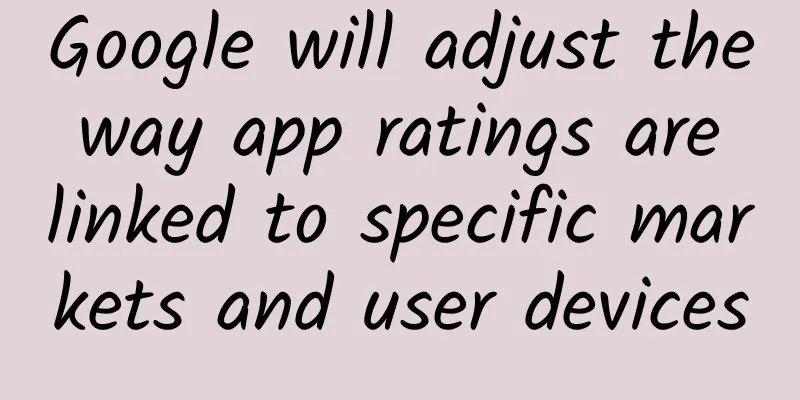Google will adjust the way app ratings are linked to specific markets and user devices

|
On August 24, Google announced on Monday local time that it will change the way its app store Play Store calculates and displays app ratings, making app ratings more relevant to the developer market and more beneficial to users. It is reported that compared with the fixed rating of applications, Google Play will give applications multiple ratings based on different markets and different devices used by users. This means that the screen sizes of devices used by users to browse the Google Play Store are different, and the ratings displayed for the same application are also different. This change could be beneficial. For one thing, not all apps offer the same functionality in all markets, and an app developer wouldn’t want to see their app’s ratings suffer because they can’t activate payment in a particular market. Another, more important reason: some apps are only suitable for larger tablets or foldable devices, and some apps have problems running on Android devices other than phones. So device-specific ratings for apps mean that when users download an app on a tablet, they’ll know in advance that it won’t work as well as on a phone.
Google plans to launch app-specific ratings for different markets in November this year, and different ratings for different types of devices such as tablets, foldable devices, Chrome OS, Wear OS or Android Auto in 2022. If Google's new way of calculating ratings will change the ratings of existing apps, the company will notify developers in advance. Google said, "Before adjusting the Google Play Store rating method, we will automatically analyze the rating changes of the application at least 10 weeks in advance. If the rating adjustment of your application is greater than 0.2 stars, we will notify you in time. This way, you have enough time to modify the application." Considering the increasing popularity of foldable devices such as the Samsung Galaxy Z Fold 3 or Z Flip 3, Google's adjustments should help both users and developers. After all, not all apps can be adapted to foldable phones, and if they are not adjusted, users of these devices are likely to give bad reviews due to poor user experience. |
<<: 10 product details analysis to show you how big manufacturers design!
Recommend
The wheelbase lengthening battle of luxury mid-size SUVs will be started by BBA
On September 6, 1999, the Audi A6L officially rol...
20 trends and thoughtful suggestions for brands in 2021
Since it is the beginning of 2021, today I want t...
Subversion! These 16 lifestyles you think are healthy are actually not that healthy
Review of this article: Pa Lizhe, chief physician...
How to make a good toilet paper that won’t clog the toilet and isn’t easily torn?
You probably use up to 50% of the toilet paper in...
How can we get a reliable cancer screening that can cost thousands of dollars?
At the end of each year, many institutions organi...
Kuaishou operation and promotion plan skills
Kuaishou is a platform with abundant private doma...
In order to conduct this experiment, scientists actually kept people awake for 88 hours!
In order to conduct this experiment, scientists a...
Can the magic medicine that promises “immortality” and “longevity” really extend life?
If someone says: There really is an elixir of lif...
Parents, please note that these children's masks do not meet the standards! How to protect infants and young children under 3 years old?
↓Recently State Administration for Market Regulat...
They look stunning but their survival is questionable. Why should we care about parrot protection?
Produced by: Science Popularization China Author:...
Selection, training, service, retirement: How are excellent guide dogs trained?
Guide dogs are working dogs. When they encounter ...
Baidu promotes the five major marketing values of information flow advertising brand zone!
Establish brand image and enhance brand trust The...
In order to cure this disease, he did not hesitate to go to court!
Author's note: In the elementary school Chine...
The screen is full of rain, rain, rain! Heavy rain is coming to the south. Please check the guide for self-help in rainstorm and flood disasters!
The Central Meteorological Observatory issued a b...
What time does the 2022 Winter Olympics Commendation Ceremony start? Where can I watch the Winter Olympics Commendation Ceremony live? Live broadcast address is attached!
The 2022 Winter Olympics and Paralympics have come...









